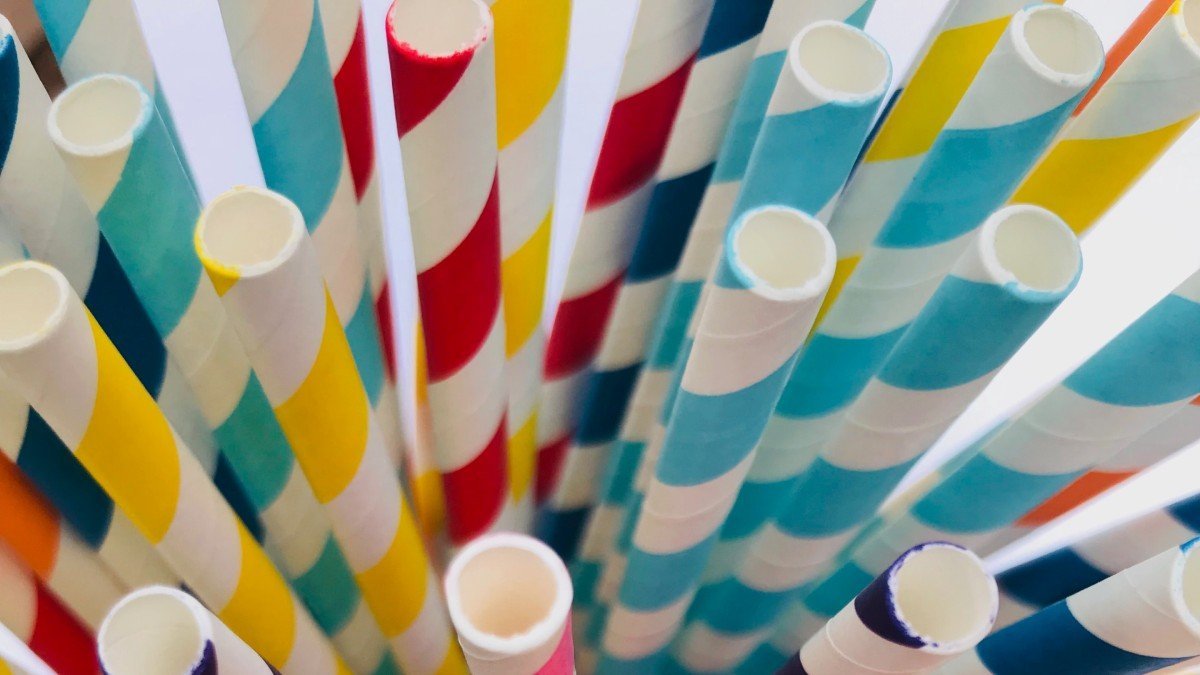Can Reusable Straws Make You Sick?

Reusable straws come in many varieties – they can be made from glass, stainless steel, silicone, bamboo, plastic, and more. They are a fantastic alternative to single-use straws. Their benefits include their convenience and accessibility for people with disabilities.
As with most sustainable alternatives, it’s important to properly clean them.
The biggest concern with reusable straws is whether they can make you sick. But, as long as you take proper care of your straw and clean it after every use, the likelihood of getting sick from using reusable straws is nearly non-existent.
However, they can harbor harmful bacteria. If there’s too much air between mouthfuls, you might also feel bloated.
Are reusable straws hygienic?
Reusable straws have a big environmental benefit over single-use straws, but are they more hygienic?
If you ever get tempted to chew on the tip of a straw, you might want to rethink doing it next time – especially if that straw is going to be used by others! Nobody wants to pick one up if they can see teeth marks around the end.
The main hygiene worry with straws is their ability to retain water inside their crevices, creating the perfect breeding ground for bacteria.
Bacteria and germs thrive with moisture. If you don’t clean the straw between uses, you might just be sucking up some harmful bacteria with your next drink.
Sugary drinks and smoothies contribute to more bacterial build-up without proper cleaning. Glass straws might be the most hygienic reusable straw because you can see when any residue is left behind.
But the inside of the straw isn’t the only place bacteria can collect. Make sure to wash your hands after going to the toilet or you could end up smearing E. coli on your straw.
A study by EmLab P&K laboratory on water bottle germs found that straw-top water bottles had far less harmful bacteria than bottles with screw-tops, slide-tops, and squeeze-tops. Because straws are upright and drain down, moisture wasn’t able to collect as much outside of the drink, resulting in only 8% harmful bacteria retained on the straw. However, the straw-top water bottles had only 2 less CFU/sq cm (colon-forming units) than a toilet seat, so proper washing is still essential.
How to clean your reusable straws
It’s important to wash your reusable straw after every use.
The best way to clean them is hand washing. Mix a little bit of dish soap or washing up liquid in the sink with hot water to create a cleaning solution.
A straw cleaning brush is the best utensil to use for cleaning, though you can also use a pipe cleaner. Make sure that the brush is big enough to insert into the straw and touch all sides, and pass it through the entire length of the straw.
If you see or think there’s any residue leftover, you can dip the wet cleaning brush into baking soda and repeat the process to dislodge the dirt.
Once clean, rinse the straw with hot water to remove any soap suds or bubbles and stand the straw up in a cup or glass to let it dry. Standing it upright is essential to let the water drain out properly so moisture will not collect inside.
Some reusable straws can be okay to put through the dishwasher.
The Spruce also advises cleaning the straw pouch or case every week to avoid trapping moisture and bacteria inside.
